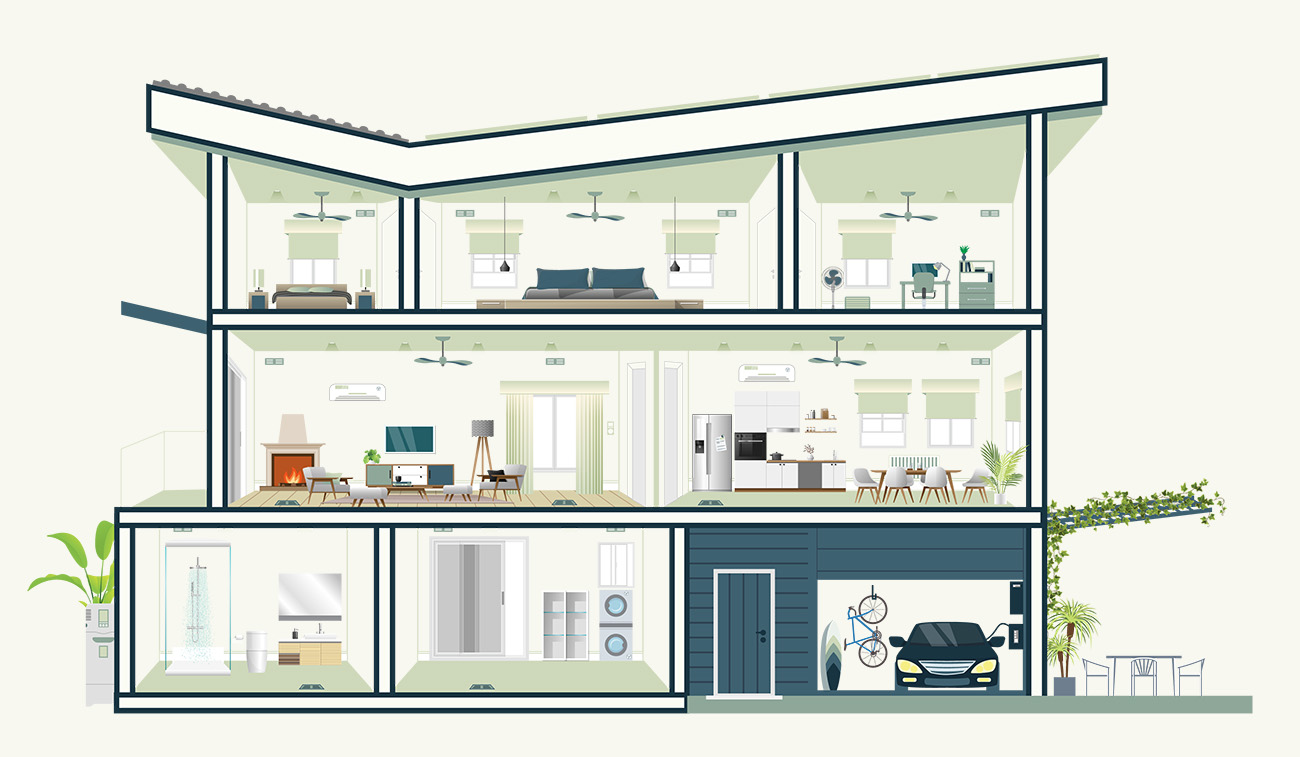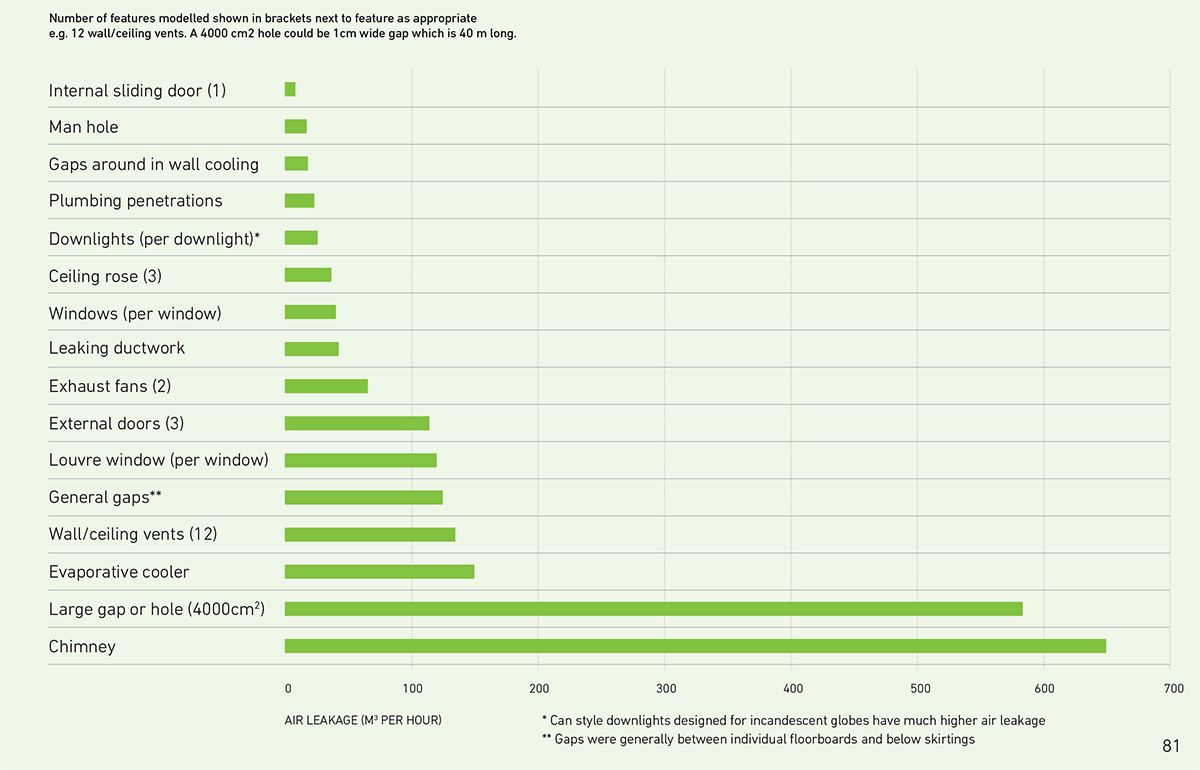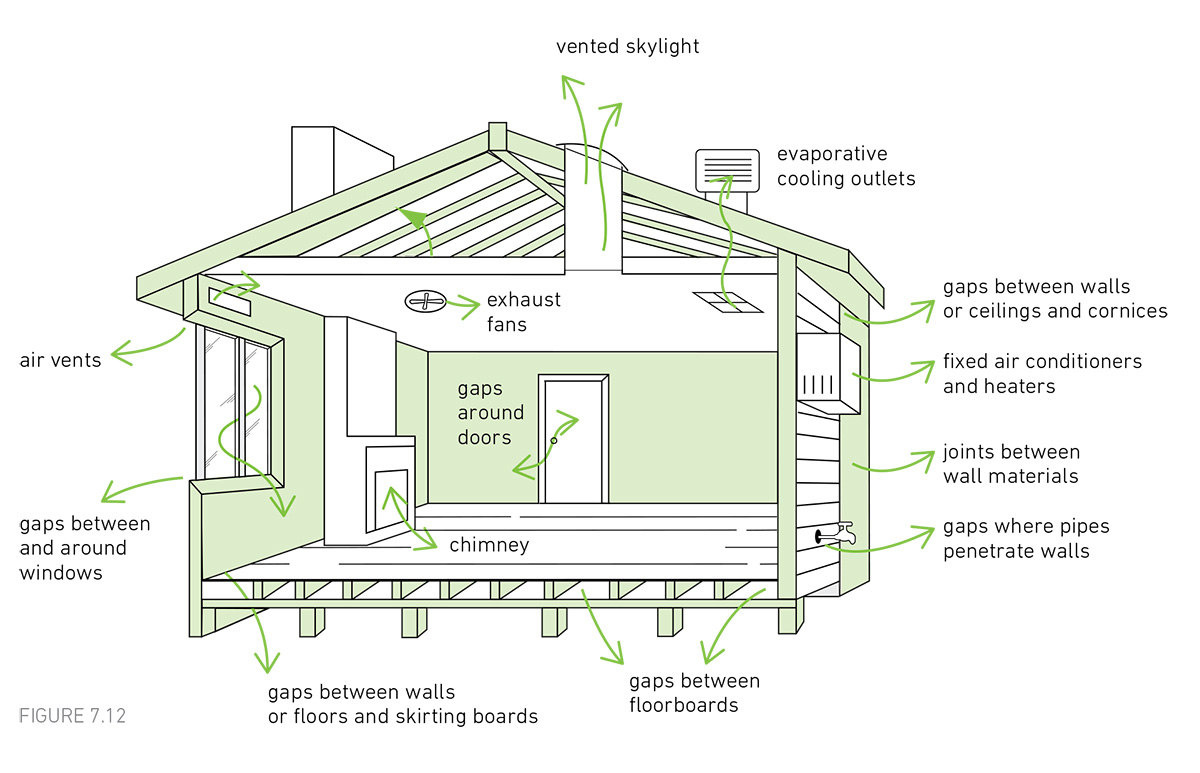Insulation and Draught Proofing

 Roofspace Insulation
Roofspace Insulation DIY roofspace insulation
 Wall Insulation
Wall Insulation Wall insulation
Wall insulation can have a big impact on home comfort. It is a little trickier to retrofit into existing homes, but there are some options available.
 Underfloor Insulation
Underfloor Insulation DIY underfloor insulation
 Fireplace
Fireplace Draught proofing a fireplace
 Sealing Wall Vents
Sealing Wall Vents Sealing wall vents
 Sealing Heating Vents
Sealing Heating Vents Sealing functional heating vents
You can also seal disused heating vents.
 Sealing Floorboard Gaps
Sealing Floorboard Gaps Sealing floorboard gaps
 Moisture in bathrooms
Moisture in bathrooms Managing moisture in bathrooms
Bathrooms are a source of moisture which needs to be managed in a more airtight home to prevent mould issues. Use your exhaust fan when showering and consider a Showerdome.
 Skirting Boards
Skirting Boards Draught proofing gaps in skirting boards
 Managing Moisture in the Kitchen
Managing Moisture in the Kitchen Managing moisture in the kitchen
Cooking can generate a lot of moisture, which can cause mould issues in a fairly draught proof home. Ensure you use lids on your pots, and diligently use your range hood. It’s a good idea to open your kitchen windows when cooking too.
 Clothes Dryer
Clothes Dryer Managing moisture for clothes drying
Line drying clothes inside the home can lead to a large build-up of moisture which has nowhere to escape to and can settle in wall or ceiling plasterboard, eventually causing mould issues. Consider a highly efficient Heat Pump Clothes Dryer.
Insulation and draught proofing work together to control a home's thermal comfort level and prevent unwanted heat gain or loss. Once draught proofing is addressed and a home becomes more airtight, ventilation and moisture management are critical to maintain air quality.
Insulation
Very few Victorian homes have adequate insulation for our climate. Without insulation a home simply can’t be energy efficient, as much of the warm or cool air we generate is lost through the ceiling, walls and floor.

If you are building a new home or extension, the National Construction Code specifies a minimum level of insulation to achieve the required energy rating, but you may wish to increase the insulation for better comfort and energy efficiency. There are many insulation options available for new builds.
Retrofit insulation for existing homes
For existing homes, you can retrofit insulation or increase the amount of existing insulation in your roof space. Floors can also be insulated if you have a house built on stumps which is accessible from underneath. You can either do this yourself or engage a professional.
DIY roofspace insulation
Most homes have some level of roofspace insulation, and it is relatively easy to increase the amount of insulation in your roofspace. It is worth checking your roofspace for insulation that may have been moved out of place ( e.g. by an electrician or NBN technician), and putting it back in place. Small gaps can have a big impact and make the roofspace insulation much less effective overall.
Gaps around light fittings are also an issue. Some light fittings can’t have insulation over them for fire safety reasons, but many LED lights nowadays can be covered with insulation.
Wall insulation
Wall insulation is a little trickier to retrofit into existing homes, but there are some options available now. If you are doing a major renovation, plasterboards or weatherboards can be removed from walls so that you can add in insulation batts.
For a less invasive option, blow-in wall insulation can be pumped into existing walls, either by removing tiles and blowing the insulation in from above, or by drilling small holes into plasterboard, into the mortar between bricks, or into weatherboards. This needs to be done by a trained professional, and there are currently only very limited suppliers in the local market who can provide this service.
Draught proofing
Most Australian homes are draughty and uncomfortably cold in winter and gain too much heat in summer. Much of the energy you spend on heating or cooling your home may be lost through gaps in your building envelope.
There are many places where air can leak, including open fireplaces, wall vents, evaporative cooling vents, skylights and exhaust fans, gaps around windows, doors, floorboards and skirting boards, wood burners and old gas heaters.
Air leakage impact of typical air leakage sites:

Typical air leakage sites in Victorian homes:

How to assess draughtiness
A Blower Door Test can assess draughtiness to diagnose how much air is entering or escaping from your home. A powerful fan is temporarily installed to pull air out of the house, and a smoke generator or infrared thermal imaging camera is used to check for locations in your walls, ceilings and floors where air is leaking. The test can be conducted by a trained professional.
For a DIY option you can detect draughts on a windy day with the back of your hand or perhaps an incense stick. You can also tape a piece of tissue on wall vents and evaporative cooling vents to see if it blows around in the wind.
Some draught proofing can be done as a DIY project. Please see the videos below for instructions, and make sure to also review our Windows & Doors section for advice on draught proofing these.
How to draught proof an open fireplace
Sealing wall and floor vents
You can also seal disused heating vents:
Sealing evaporative cooling vents
Evaporative cooling vents can be an important air leakage site and can actually cost you more in winter than in summer due to the loss of warm air through the vents. It is not enough to close the louvres. To achieve an airtight closure, the vents should be covered with a plastic cover, or even with cling wrap.
Draught proofing gaps in skirting boards and floorboards
Ventilation, moisture management and air quality
Making an effort to draught proof and insulate our homes can have big benefits in home comfort and energy efficiency. However the more airtight our homes become, the more conscious we need to be of adequate ventilation. Draughty homes breathe automatically, but more airtight homes need to be manually ventilated, e.g. by opening windows or installing a Heat Recovery Ventilation system.
Risks of inadequate ventilation
If a home is not adequately ventilated, this can lead to issues with condensation, moisture build-up and mould. Other air contaminants and dangerous pollutants such as carbon monoxide (CO) from gas heaters can also build up inside the home. Homes built in particularly humid or damp environments will need even more careful moisture management.
Particular problem areas are outlined below.
Kitchen
Cooking can generate a lot of moisture and other pollutants, especially if you cook with gas. Ensure you use lids on your pots, and diligently use your range hood / extractor fan. It’s a good idea to open your kitchen windows for a bit to let excess moisture escape, and let fresh air in.
Bathrooms
Bathrooms are an obvious source of moisture. Limit the length of time in your shower (this will also save water and heating costs) and make sure to use the exhaust fan while showering, leaving it running for about 10-15 minutes afterwards and ideally open a window at the same time.
Some exhaust fans now come with a humidity sensor, allowing them to turn on and off automatically depending on the amount of moisture in the air. Humidity sensors can also be retrofitted as part of the fan switch, rather than replacing the exhaust fan itself.
A Showerdome is also worth considering. This is a clear “lid” that sits on top of your shower and prevents moisture from escaping. The benefits include a dry bathroom, mist-free mirrors and a warm shower experience (great in winter!).
Clothes drying
With more people being environmentally aware, it is common to dry clothes on a line inside if the weather is not suitable for outside drying. Line drying clothes inside the home can lead to a large build-up of moisture which has nowhere to escape to and can settle in wall or ceiling plasterboard, eventually causing mould issues.
Clothes dryers have traditionally used a lot of energy, however newer heat pump clothes dryers have up to 10 star energy ratings and can be extremely efficient. They are a great solution for any Victorian home, in particular if coupled with renewable energy generation so that the clothes dryer can be powered by solar panels. See the Washing & Drying section on the Appliances page for more details.
Breathing
There is not much we can do about this one, except for opening bedroom windows for 5-10 minutes in the morning to refresh the air and let moisture escape. If your house is particularly airtight, see the section below on Heat Recovery Ventilation.
Gas heaters and wood heaters
Gas heaters and wood heaters produce carbon dioxide (CO2) and carbon monoxide (CO). Wood heaters also produce other emissions such as sulfur oxides (SOx) and nitrogen oxides (NOx). These particulates may also be an issue for your neighbours as they are emitted through the chimney.
Your gas heater should be serviced and checked by a licenced technician at least every two years to make sure it is safe.
Wood heaters require oxygen, and some wood heaters come with an optional fresh air kit. If you do decide to buy a new wood heater, choose a model that has high efficiency and low emissions. You may also need to periodically open your windows for a short time while operating your wood heater.
In general, both gas and wood are not renewable sources of energy. Read more about the all electric home and how to get off gas here >>
Heat recovery ventilation
Homes that are particularly airtight may require additional mechanical ventilation. A Heat Recovery Ventilation unit can be installed in the roof or wall space and can extract air from bathrooms, filter the air and then gently blow the clean air into other rooms such as bedrooms, which require a supply of fresh air during the night. Heat Recovery Ventilation systems can recover up to 95% of the heat in exhaust air so that there is not much heat loss during the purification and ventilation process. This makes them very energy efficient.
